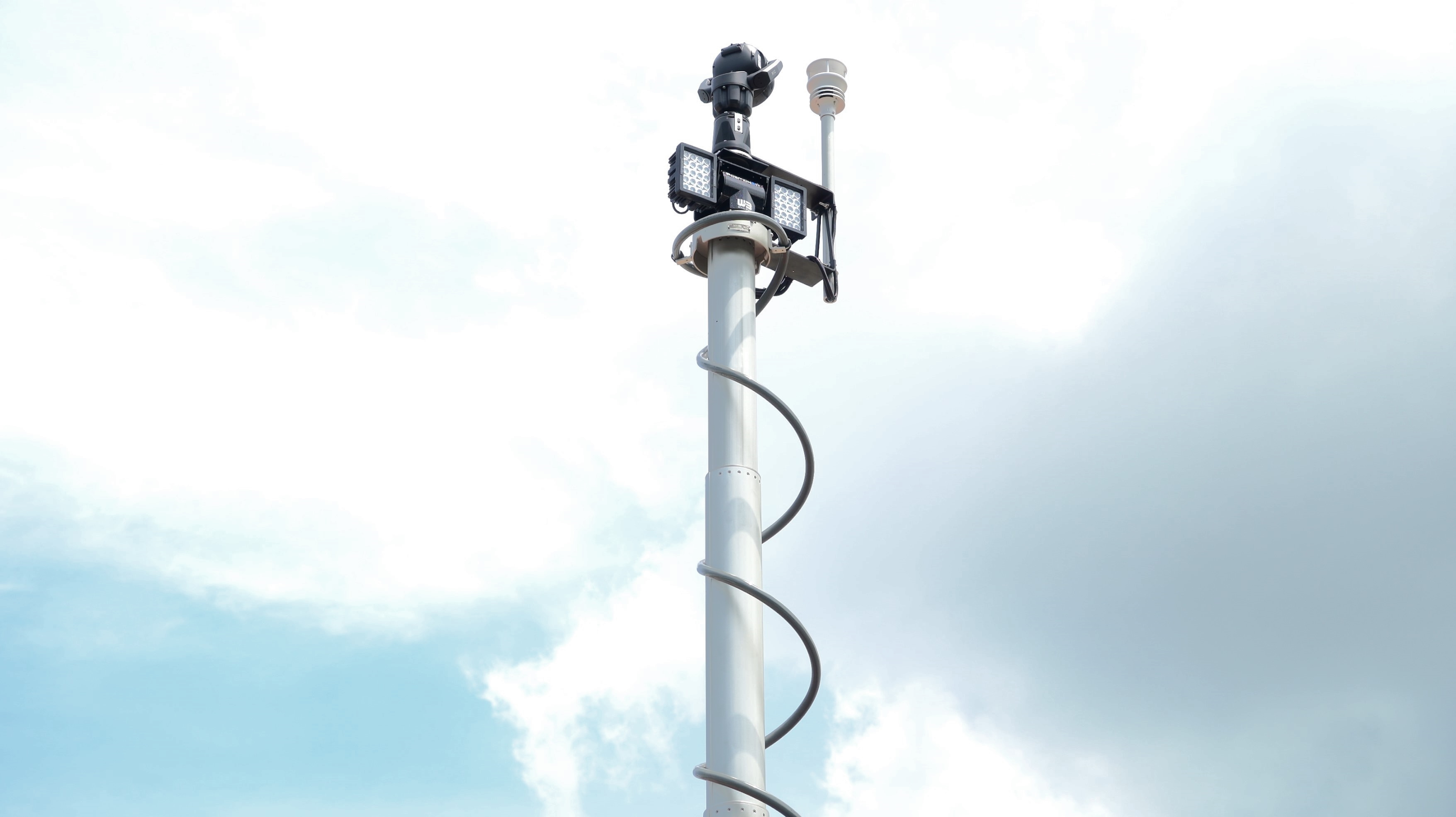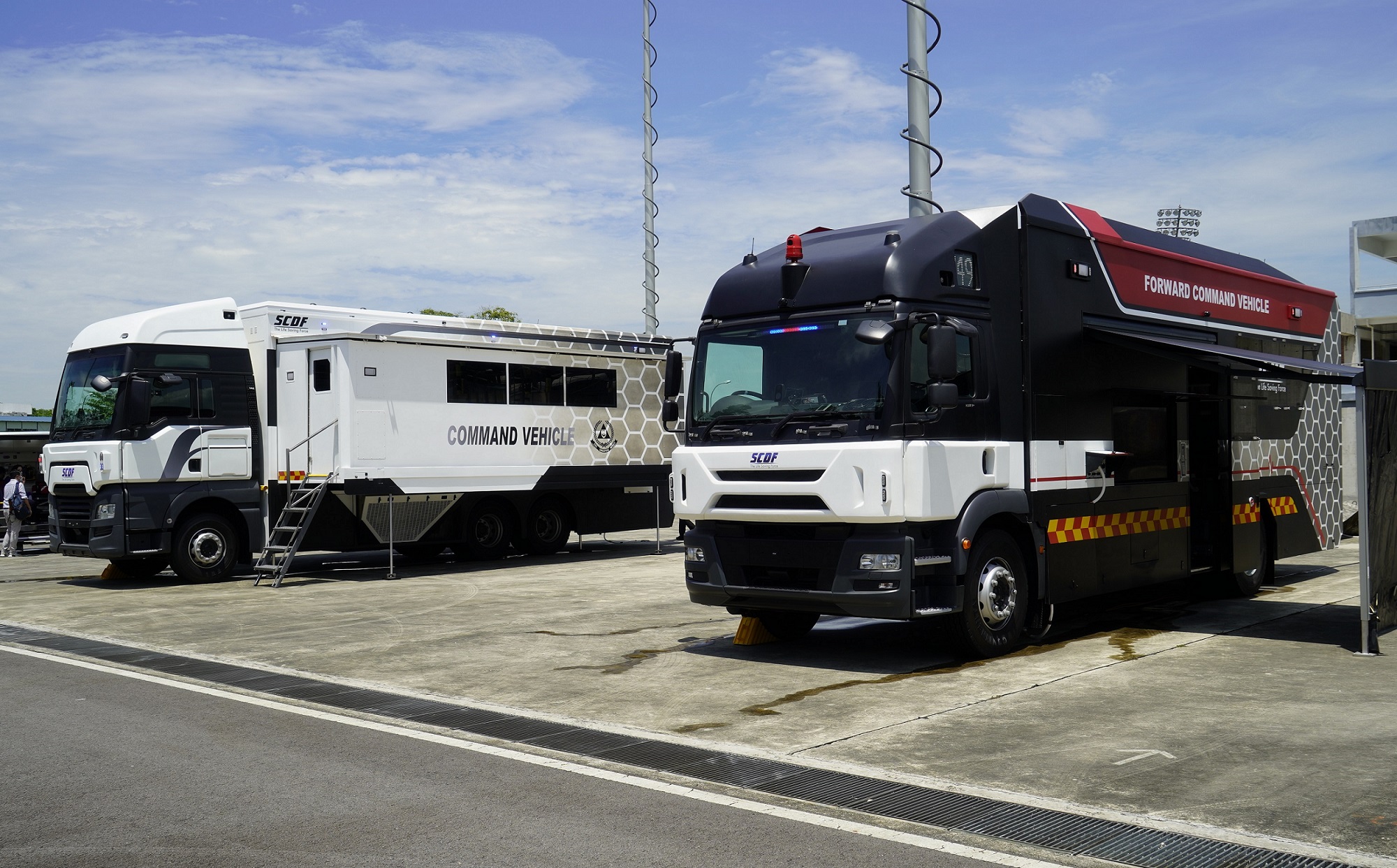15 Apr 2021
Jointly developed by DSTA, the Singapore Civil Defence Force (SCDF) and ST Engineering, the two new SCDF Mobile Command Post (MCP) vehicles unveiled on 15 April 2021 will enhance situational awareness for better command and control during SCDF's crisis responses.
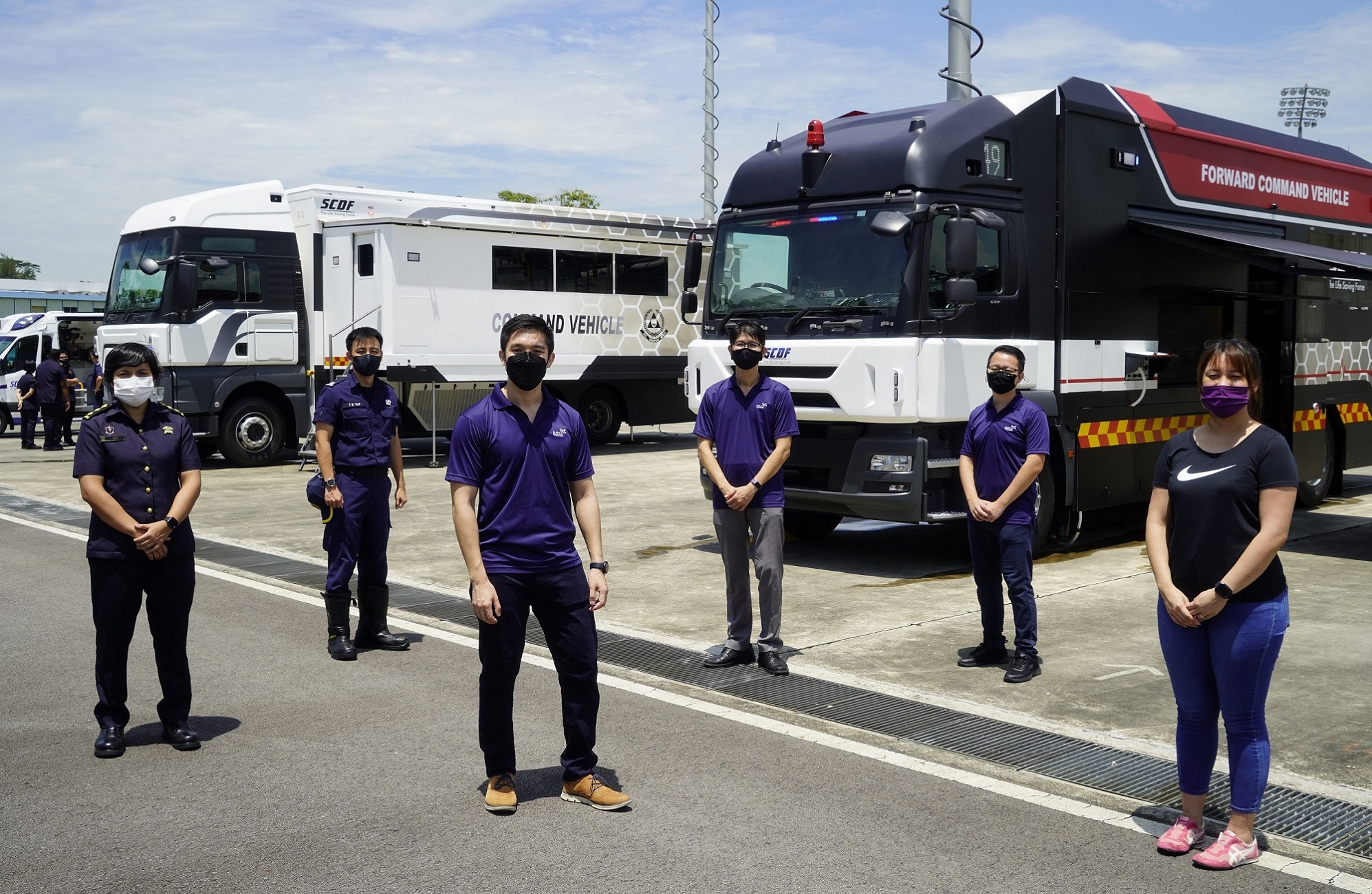
Project Manager (Land Systems) Lee Choon Huat, Senior Engineer (Systems Engineering and C3 Centre) Tay Khim Wee, and Engineer (Land Systems) Titus Yeo with SCDF and ST Engineering representatives.
The MCP comprises two types of command vehicles – the Forward Command Vehicle (FCV) and Command Vehicle (CV) – that are deployed onsite near crisis incident locations. For incidents of higher severity such as bomb explosions or chemical agent incidents, the FCV will be activated to facilitate mission planning, decision making and incident monitoring, led by SCDF commanders. If the incident escalates further, CVs would be activated for a full set-up of SCDF's Tactical Headquarters to manage major crises, led by the SCDF Commissioner. The Tactical Headquarters comprise a total of five CVs.
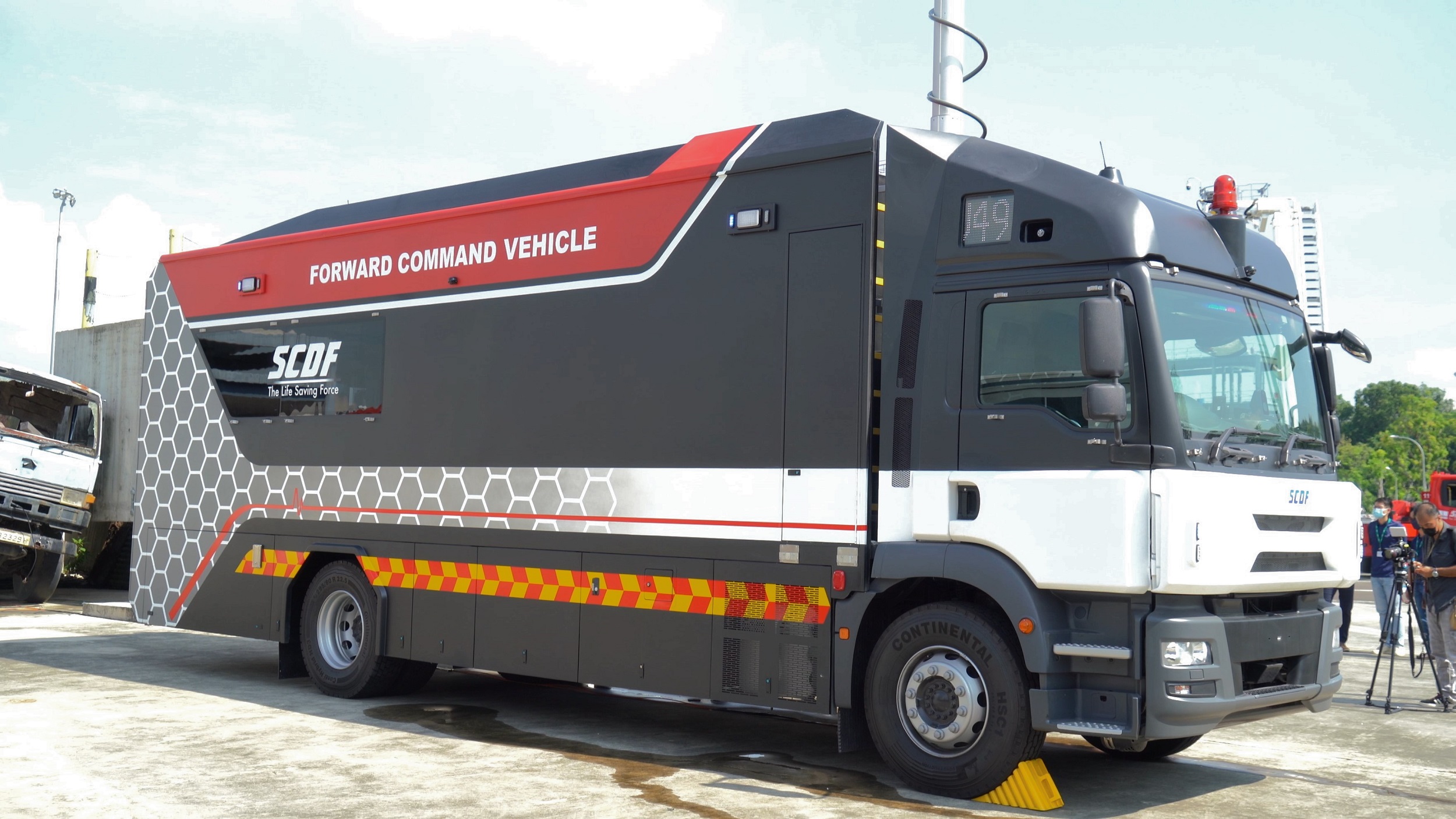
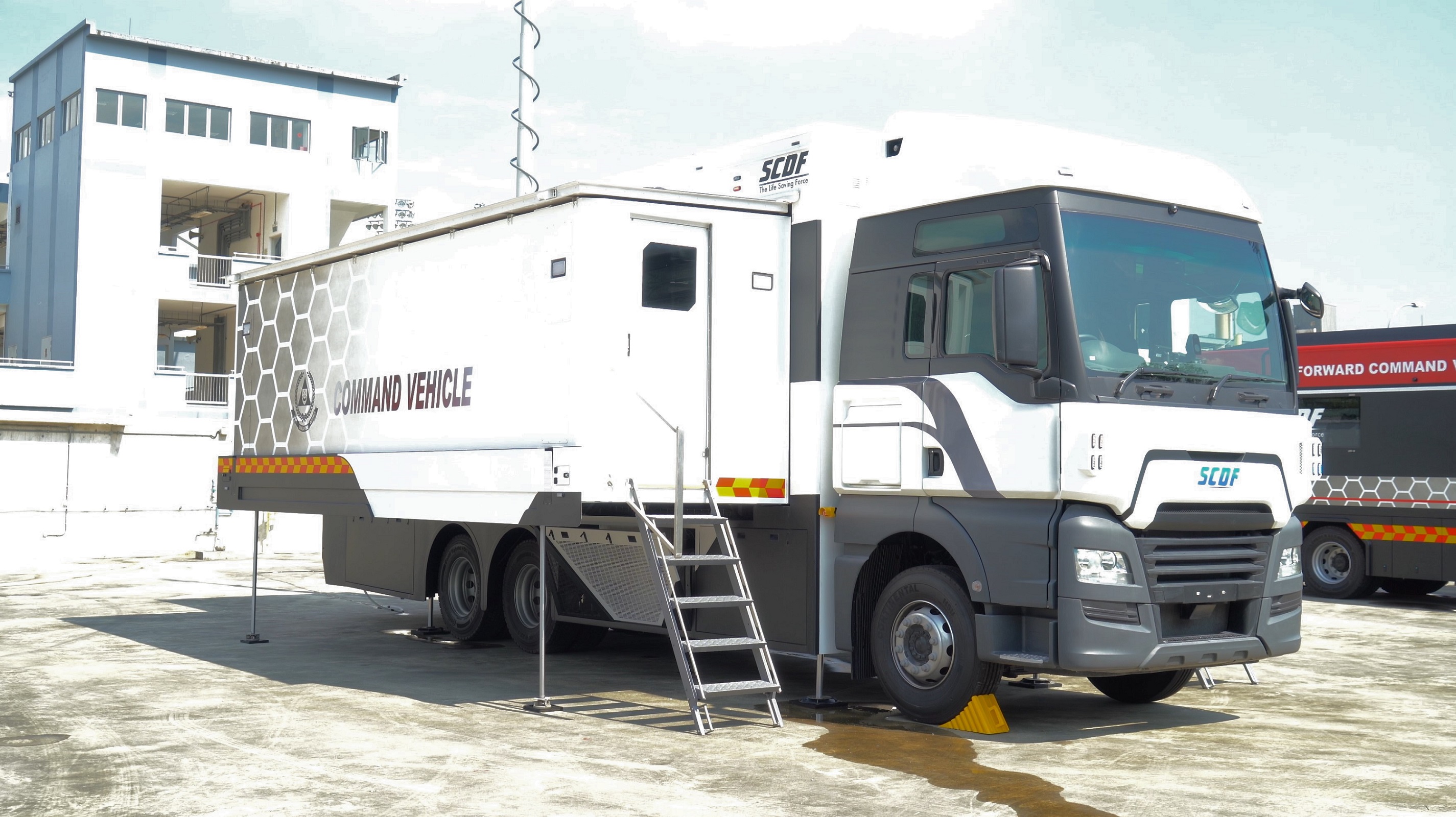
The FCV (left) and CV.
Model- and scenario-based capability development
A multi-disciplinary DSTA team from Land Systems Programme Centre (PC), Systems Engineering and C3 Centre PC, and Procurement PC came together to develop the new MCP vehicles. The vehicles were built for increased capacity and reliability, equipped with collaborative planning capabilities, and highly networked with state-of-the-art Command, Control, Communications, Computers and Information Technology (C4IT).
Working closely with the SCDF, the team sought to understand their concept of operations quickly for a deeper appreciation of their operational challenges. Through model-based system engineering and scenario-based requirements gathering, the team was able to gain user feedback and insights to mitigate potential risks and identify latent needs.
The team also leveraged 3D models in upfront studies to design workspaces within the vehicles, which helped them to visualise the layout and operational workflows. Besides shortening the time required for design reviews, this also allowed technological solutions to be explored more easily.
Improved efficiency
A key factor for the CV and FCVs was the ability to facilitate SCDF operations on the move. The team harnessed Human Factors Engineering to optimise the vehicles' interior layout and workflows to facilitate discussion, enhance decision making and minimise operational fatigue during prolonged operations. Furniture and equipment placement had to be considered carefully for everything to be stowed into the limited floor space available. In addition, the team ensured the layout could be easily reconfigured between CVs, allowing a different number of personnel and equipment set-up for different operations.
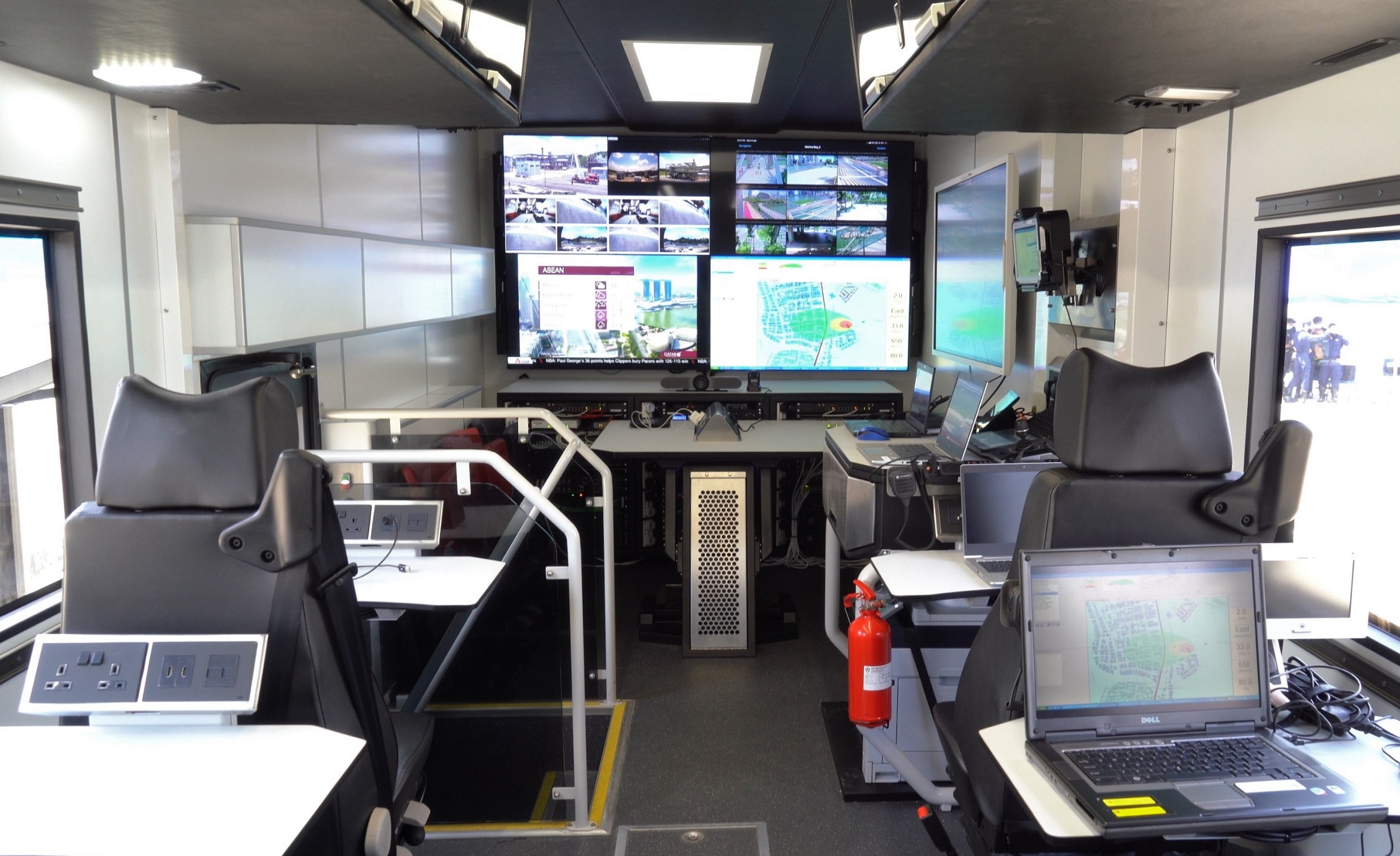
The team also introduced an automated cabin expansion system to the CV for increased efficiency and safety. With the push of a button, the cabin extension could be deployed automatically, allowing the CV to be set up in 20 minutes while using 50 per cent less manpower. This was achieved by equipping the shelter stabiliser legs with auto-levelling capability adapted from the Singapore Army’s Mobile Command Post design.
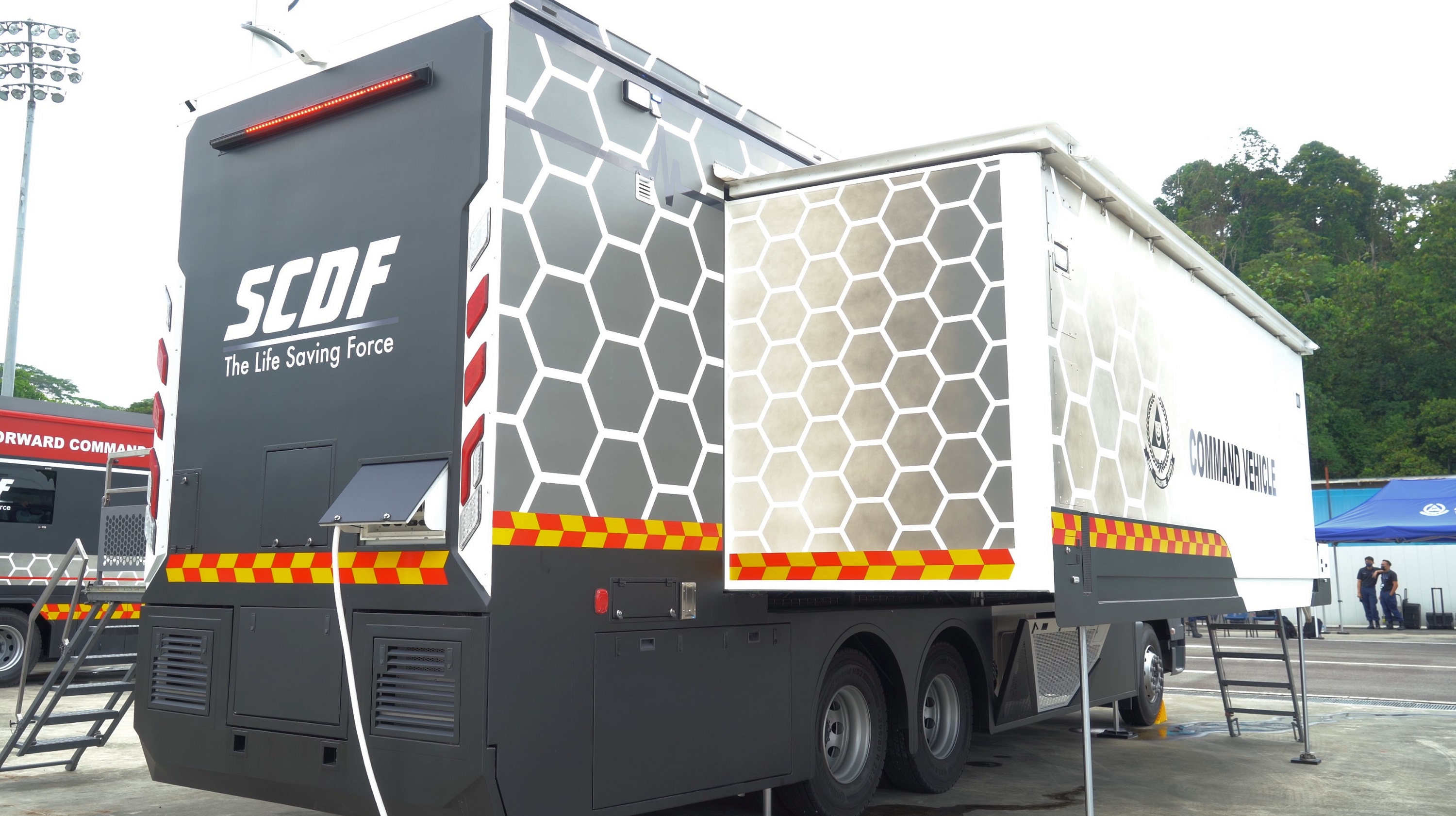
The CV cabin extension when fully deployed.
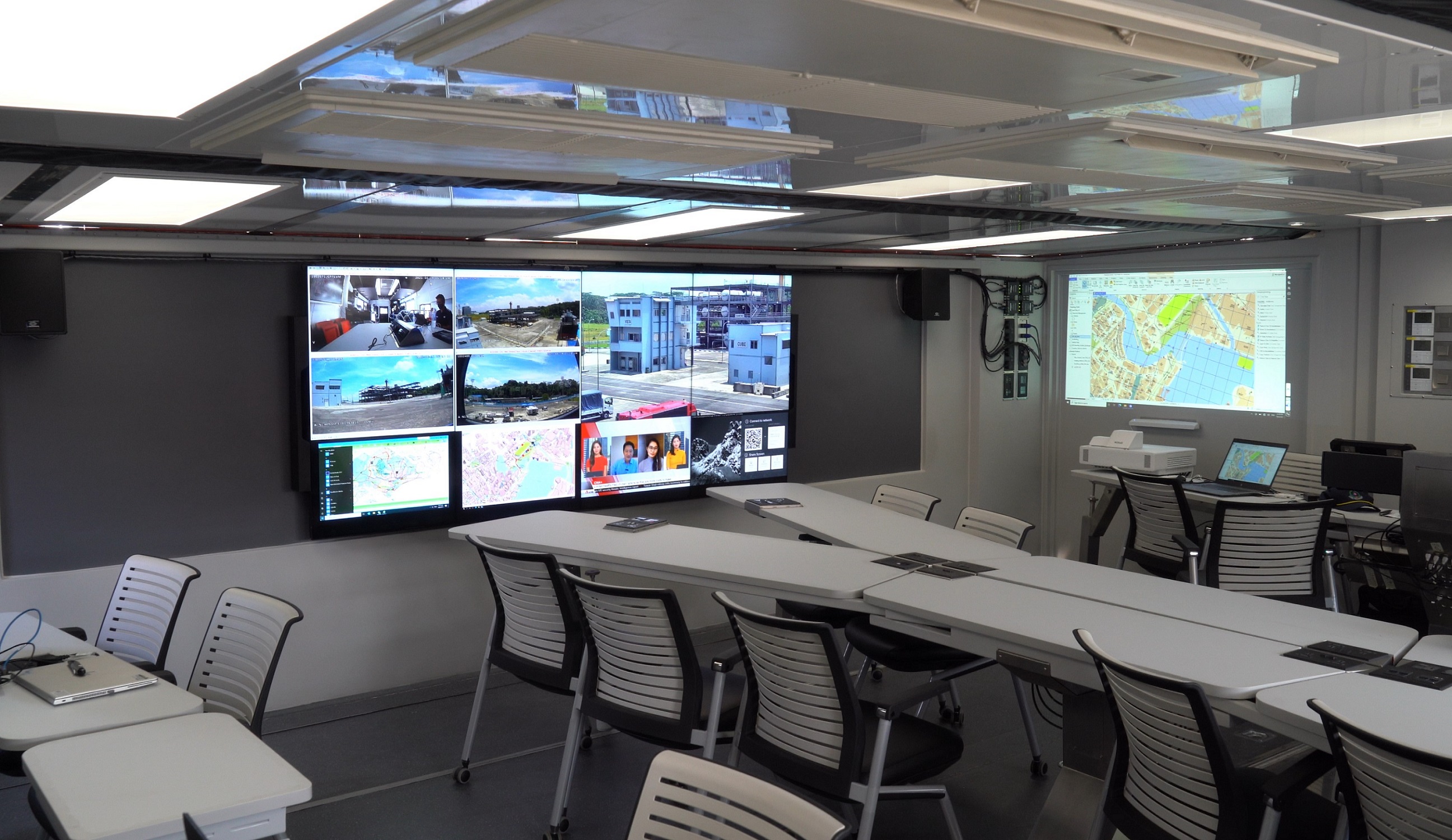
The CV can be easily reconfigured as needed.
Greater operational readiness
Compared to conventional operations centre command posts, MCPs were subjected to greater wear and tear due to on-the-go storage and transportation conditions. The vehicles also had to be on standby at all times, requiring high operational readiness and quick maintenance turnaround time. Hence, the team integrated a vehicle Health Usage Monitoring System to enhance maintainability, as well as leverage data analytics to identify trends and improve the vehicles’ overall availability.
To ensure that the vehicles would enable sustained operations in the field, the team also developed a split-system architecture for the power supply and cooling system to avoid any single point of failure for critical systems. The system would switch between two power generators automatically to enhance reliability in the long run.
Enhanced C4IT capabilities
During operations, SCDF personnel will need to draw upon various data sources such as video feeds from SCDF responders, vehicles, drones, CCTV footage, and in-house operational systems for terrain mapping and scenario simulations. The team integrated these disparate systems into a single sense-making suite for enhanced situational awareness, connectivity, collaboration, and decision-making. For example, a video wall was introduced to collate the data sources and serve as a common point of reference for planning and discussion. The team also fitted the vehicles with a mast equipped with weather monitoring, spotlight, and surveillance capabilities.
With the integration of new technological upgrades, the latest MCPs will enhance the SCDF’s capabilities to manage a spectrum of emergencies and crises. The new vehicles will be progressively operationalised from July 2021.
